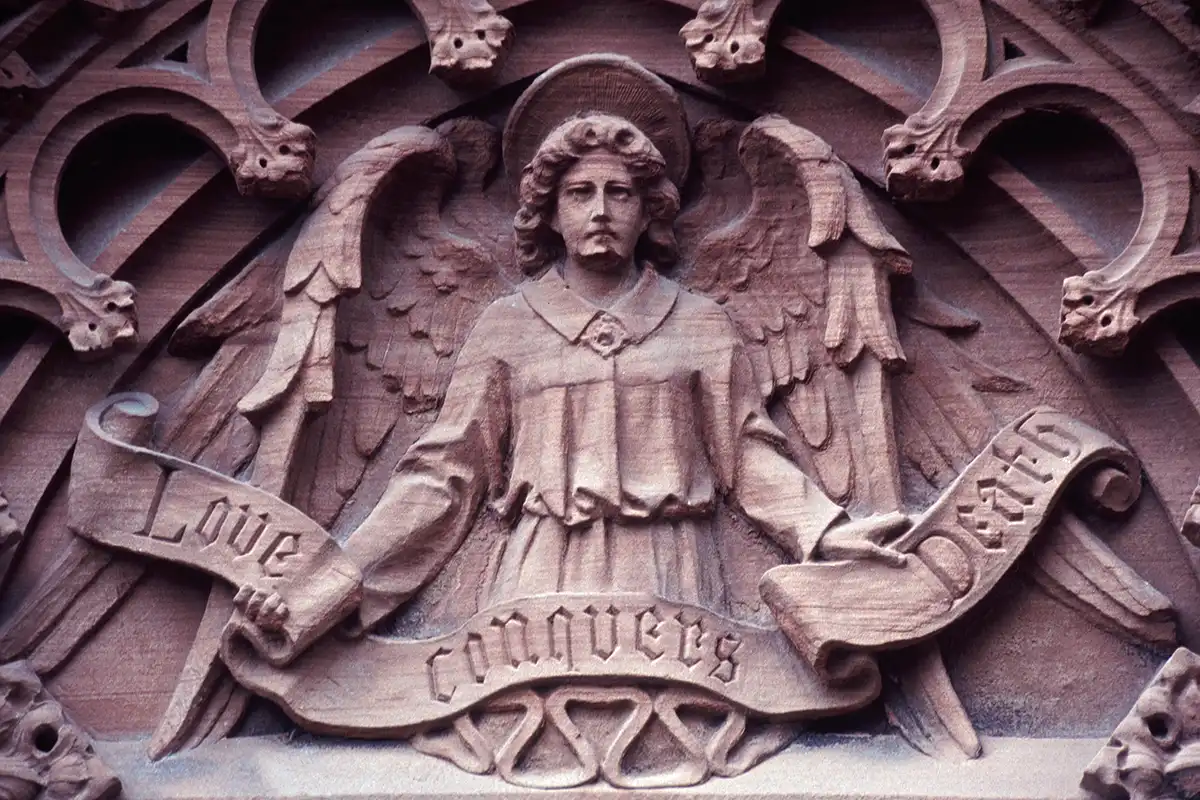Rosslyn Chapel, Midlothian
Rosslyn Chapel, located in the village of Roslin in Midlothian, Scotland, is a remarkable architectural gem steeped in history, mystery, and intricate craftsmanship. Founded in 1446 by Sir William St. Clair, the third and last Prince of Orkney, the chapel was intended to be a grand collegiate church dedicated to St. Matthew. However, its construction was never fully completed as originally envisioned, leaving behind a structure that is both enigmatic and awe-inspiring. Today, Rosslyn Chapel stands as a testament to medieval artistry, a site of spiritual significance, and a magnet for historians, tourists, and those intrigued by its alleged connections to secret societies like the Knights Templar and the Freemasons.
The chapel’s most striking feature is its extraordinary stonework, which showcases an unparalleled level of detail and symbolism. The interior is adorned with hundreds of carvings, ranging from biblical scenes to pagan motifs, such as the famous “Green Man” figures—over 100 depictions of a face surrounded by foliage, symbolizing nature and rebirth. The “Apprentice Pillar,” an exquisitely carved column, is one of the chapel’s most celebrated elements. Legend has it that the pillar was crafted by an apprentice while his master was away, and upon seeing its perfection, the jealous master murdered the apprentice. This tale, whether true or apocryphal, adds to the chapel’s mystique. Another notable feature is the ornate ceiling, decorated with stars, roses, and other symbols, hinting at a deeper, perhaps esoteric meaning woven into the design.
Rosslyn Chapel’s historical context is equally fascinating. Built during a time of political upheaval and religious transition in Scotland, it reflects the wealth and ambition of the St. Clair family, who were prominent landowners and influential figures in Scottish history. The chapel served as a private place of worship for the family and was meant to house a community of priests praying for the souls of the St. Clairs in perpetuity. However, after Sir William’s death in 1484, construction slowed, and the grand cruciform church he envisioned was never realized. The Reformation in the 16th century further disrupted its purpose, as Catholic practices were suppressed, and the chapel fell into disuse and disrepair for centuries.
In the modern era, Rosslyn Chapel gained renewed attention, partly due to its appearance in popular culture, most notably Dan Brown’s 2003 novel The Da Vinci Code. The book speculated that the chapel might be a hiding place for the Holy Grail or hold secrets tied to the Knights Templar and the bloodline of Jesus Christ. While these claims are largely dismissed by historians, they have fueled public fascination and boosted tourism. The Rosslyn Chapel Trust, established in 1995, has since worked tirelessly to preserve the site, undertaking major restoration efforts to protect its delicate stonework from weather damage and time.
Today, Rosslyn Chapel remains a place of worship, a historical monument, and a symbol of Scotland’s rich heritage. Its blend of Gothic architecture, intricate carvings, and tantalizing mysteries ensures its enduring allure. Whether one visits for its beauty, its history, or its legends, Rosslyn Chapel offers a profound connection to the past—a small yet magnificent edifice that continues to captivate the imagination nearly six centuries after its foundation.Rosslyn Chapel, Midlothian, Scotland.
Rosslyn Chapel, located in the village of Roslin in Midlothian, Scotland, is a remarkable architectural gem steeped in history, mystery, and intricate craftsmanship. Founded in 1446 by Sir William St. Clair, the third and last Prince of Orkney, the chapel was intended to be a grand collegiate church dedicated to St. Matthew. However, its construction was never fully completed as originally envisioned, leaving behind a structure that is both enigmatic and awe-inspiring. Today, Rosslyn Chapel stands as a testament to medieval artistry, a site of spiritual significance, and a magnet for historians, tourists, and those intrigued by its alleged connections to secret societies like the Knights Templar and the Freemasons.
The chapel’s most striking feature is its extraordinary stonework, which showcases an unparalleled level of detail and symbolism. The interior is adorned with hundreds of carvings, ranging from biblical scenes to pagan motifs, such as the famous “Green Man” figures—over 100 depictions of a face surrounded by foliage, symbolizing nature and rebirth. The “Apprentice Pillar,” an exquisitely carved column, is one of the chapel’s most celebrated elements. Legend has it that the pillar was crafted by an apprentice while his master was away, and upon seeing its perfection, the jealous master murdered the apprentice. This tale, whether true or apocryphal, adds to the chapel’s mystique. Another notable feature is the ornate ceiling, decorated with stars, roses, and other symbols, hinting at a deeper, perhaps esoteric meaning woven into the design.
Rosslyn Chapel’s historical context is equally fascinating. Built during a time of political upheaval and religious transition in Scotland, it reflects the wealth and ambition of the St. Clair family, who were prominent landowners and influential figures in Scottish history. The chapel served as a private place of worship for the family and was meant to house a community of priests praying for the souls of the St. Clairs in perpetuity. However, after Sir William’s death in 1484, construction slowed, and the grand cruciform church he envisioned was never realized. The Reformation in the 16th century further disrupted its purpose, as Catholic practices were suppressed, and the chapel fell into disuse and disrepair for centuries.
In the modern era, Rosslyn Chapel gained renewed attention, partly due to its appearance in popular culture, most notably Dan Brown’s 2003 novel The Da Vinci Code. The book speculated that the chapel might be a hiding place for the Holy Grail or hold secrets tied to the Knights Templar and the bloodline of Jesus Christ. While these claims are largely dismissed by historians, they have fueled public fascination and boosted tourism. The Rosslyn Chapel Trust, established in 1995, has since worked tirelessly to preserve the site, undertaking major restoration efforts to protect its delicate stonework from weather damage and time.
Today, Rosslyn Chapel remains a place of worship, a historical monument, and a symbol of Scotland’s rich heritage. Its blend of Gothic architecture, intricate carvings, and tantalizing mysteries ensures its enduring allure. Whether one visits for its beauty, its history, or its legends, Rosslyn Chapel offers a profound connection to the past—a small yet magnificent edifice that continues to captivate the imagination nearly six centuries after its foundation.

Martin Gray is a cultural anthropologist, writer and photographer specializing in the study of pilgrimage traditions and sacred sites around the world. During a 40 year period he has visited more than 2000 pilgrimage places in 160 countries. The World Pilgrimage Guide at sacredsites.com is the most comprehensive source of information on this subject.

